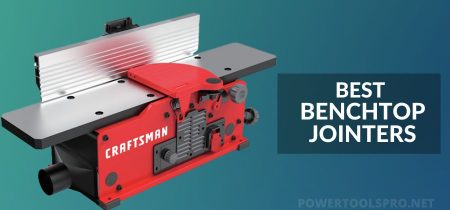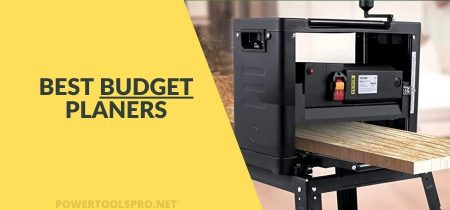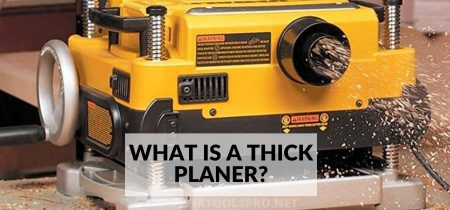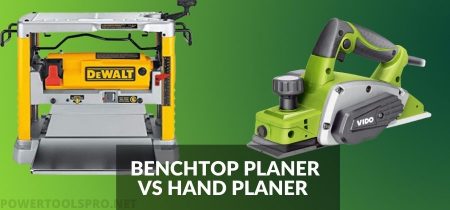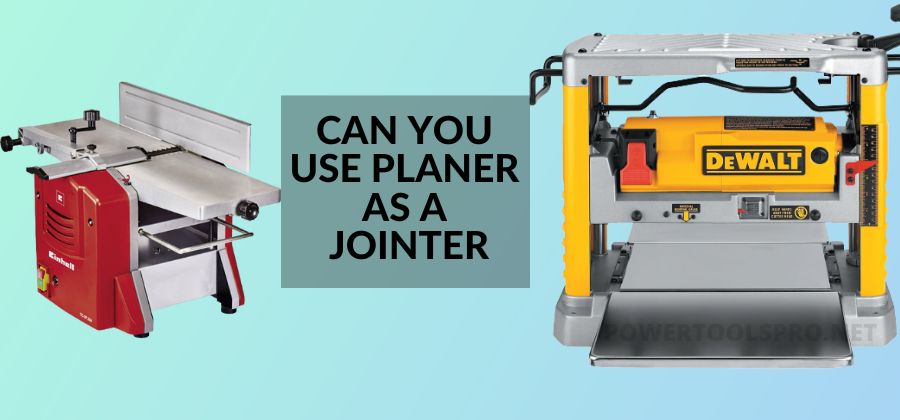
Fine woodworking needs the material to be as flat, square, and of a consistent thickness. We can use woodworking jointers and planers to achieve these features without any hassle.
While the two instruments do seemingly similar jobs, there is a significant difference in the final quality of the wood produced by each. This is why many beginners and some professionals are seen putting their thoughts into the planer vs. jointer debate.
Considering the energy put into this debate, we decided to test both tools and see if they perform the same job. Moreover, we wanted to solve the confusion about the question “can you use a thickness planer as a jointer?”. Here are our two cents on the topic
How to use a thickness planer?
To use the thickness planer as a jointer, we need to assess first if we can use the planer itself. We see many beginners struggling in working their way around the thickness planer. To have a clear idea of the tool and its function, go through this video:
Now that you have the basic understanding, we will use the thickness planer as a jointer.
Advantages of using a Thickness planer as a Jointer:
There are several advantages of using one tool to get the purpose of two:
Less Money Spent
When using one tool for several purposes, there is an obvious advantage of less money spent. One device – the jack of all trades but master of some – does many small jobs, although there may be the downside of some jobs not being done perfectly.
Nevertheless, many users, including beginners, are at ease regarding this. When they want the basic jobs done with the tool and don’t want to spend a lot on expensive equipment, these 2-in-1 machines offer the best alternatives.
Less Use of Space
This advantage is of great significance to users who usually work in confined spaces or don’t want the tools to take up a lot of space in their work area. Since there is one machine, there is only one cutter head, motor, and blade system; there is less space consumption.
Less Maintenance Required
As we have already mentioned, there is only one cutting assembly with the machine; it needs much less maintenance than two separate machines. This can save the users from wasting much time and energy on maintenance and will allow them to be more productive and get more jobs done with as little time as possible.
Disadvantages of using a Thickness Planer as a Jointer:
While there are some apparent advantages of using the planer as a jointer, as we just described, there are also several disadvantages. We have listed some of the main disadvantages here.
Faster Wearing Out of the Machine
Machines are complicated, and their different parts are bound to wear out. When using one single device for two jobs, the parts will wear out faster than with a single use. This can be troublesome for the users who want their products to be durable and long-lasting.
The repair or the replacement of these worn-out parts can also be bad for the users who usually go for budget-friendly options when they choose their power tools.
Sniping
This issue is serious even with individual jointers and planers, and when you are using the same device for two jobs, sniping is even more prone to happen, and the first and last parts of the wood material will be cut deeper than the rest. If you want to get a lot of work done from the machine for an extended period, you must keep this issue in mind.
Difference Between Thickness Planer and Jointer
Now we are going to take a look at the differences between a planer and a jointer.
What is a Planer?
The work of the planer is evident from its name. It is a tool that makes the whole surface of the wood plane. One of its main properties is that it can make flat surfaces with an even thickness.
When Should I Use a Planer?
A planer makes woodworking jobs a lot easier because you won’t have to go to a carpenter or another woodworker to get your wood material flattened. You can take any irregular wood from the lumber yard and make it flat and of the desired thickness.
Thus you will need a planer when you want materials to become flat and of a uniform thickness.
How Do I Use a Planer?
The most efficient way to use a planer has already been described in the youtube video we provided above. Moreover, wear safety equipment, including goggles, gloves, and helmets. If you want expert advice, you can visit any woodworking pros and ask them for guidance.
What’s a Jointer?
We use jointers to flatten bent or domed boards and join different board edges. They can also make one face of a board and its one edge flat compared to each other.
To do this, the jointer uses a cutting head to cut the outgrown parts of a cupped wood piece. In doing so, it cuts out the excess and produces a final product that is entirely flat.
What Does a Jointer Do?
A jointer is supposed to make flat surfaces out of seemingly hard cupped and bent covers. It can produce flat edges on boards when we want to join them to have wider boards.
When Should I Use a Jointer?
If you are someone who gets their lumber already done from a lumber mill, you won’t need a jointer for your day-to-day jobs. But if you get rough surface or raw lumber and your job is to do further work with this type, then the jointer is an essential tool for you.
This is because raw lumber does not have suitable flat surfaces. Thus it cant be used for a lot of woodworking jobs. The jointer makes the lumber flat and easy to work with. We can use this flat lumber for making a lot of wood products.
How Should I Use a Jointer?
- Set the tables so that the input and the output tables are coplanar.
- Set the cut depth so you can make the cuts of a proper depth.
- Feed the wood into the jointer through the input table applying gentle pressure on the wood.
- The cutter will cut the wood according to the depth set, and the flattened wood will come out of the outfeed table.
How to Use a Jointer and Planer Together
We use a jointer and a planer together when there is a need to make a flat surface equal in thickness. If this is the job you want to be done, you will have to use both the machines – the planer and the jointer.
If you own a jointer planer combo, you are lucky because they have both these components in the same machine. This will allow getting the function of both devices without any hassle.
Follow these simple steps to use both machines to make an excellent flat surface with an equal thickness to the wood you are working with:
1) Flatten the Wood With A Jointer
Feed the wood first into the jointer to make a flat surface. Only the flat surface will be suitable to be made of equal thickness with the help of a planer.
2) Use A Planer To Make A Surface of Equal Thickness
Now feed the wood into the planer with the flat side down. This will make both the surfaces flat, which are also parallel.
Frequently Asked Questions
1. Do you need a jointer if you have a thickness planer?
If you plan to get into the woodworking job for extended periods, you should get both machines because one makes one flat wood surface, and the planer then makes the second surface flat and parallel to the first one.
2. Can you turn a planer into a jointer?
Use the table to run the piece of wood through the planer, sticky mats, and shims to get the wood to be as level as possible, and run the wood through the planer. In this way, you can use your planner as a jointer.
3. How can you flatten a board if you only have a planer?
If you can make the wood as level as possible when it is fed into the planer, you can make the board flat to a reasonable degree. But if you want the best results when flattening boards, use a jointer instead.
4. Should You Use a Jointer First?
Planers usually make the boards attain a uniform thickness when the panels are already flat. So to get the best job done with your planer, use a jointer to make the wood flat.
5. Why Should You Use a Jointer Before a Planer?
A jointer will make the board flat, after which completing it of a uniform thickness will be much easier, and the job will be much more polished. Thus it would help if you used a jointer before a planer.
6. Can You Use a Planer as a Jointer?
We can use a planer as a jointer, but the wood surface would not be as flat as a jointer. We should use a jointer first to make a flat surface, after which the planer will make it of an equal thickness.
